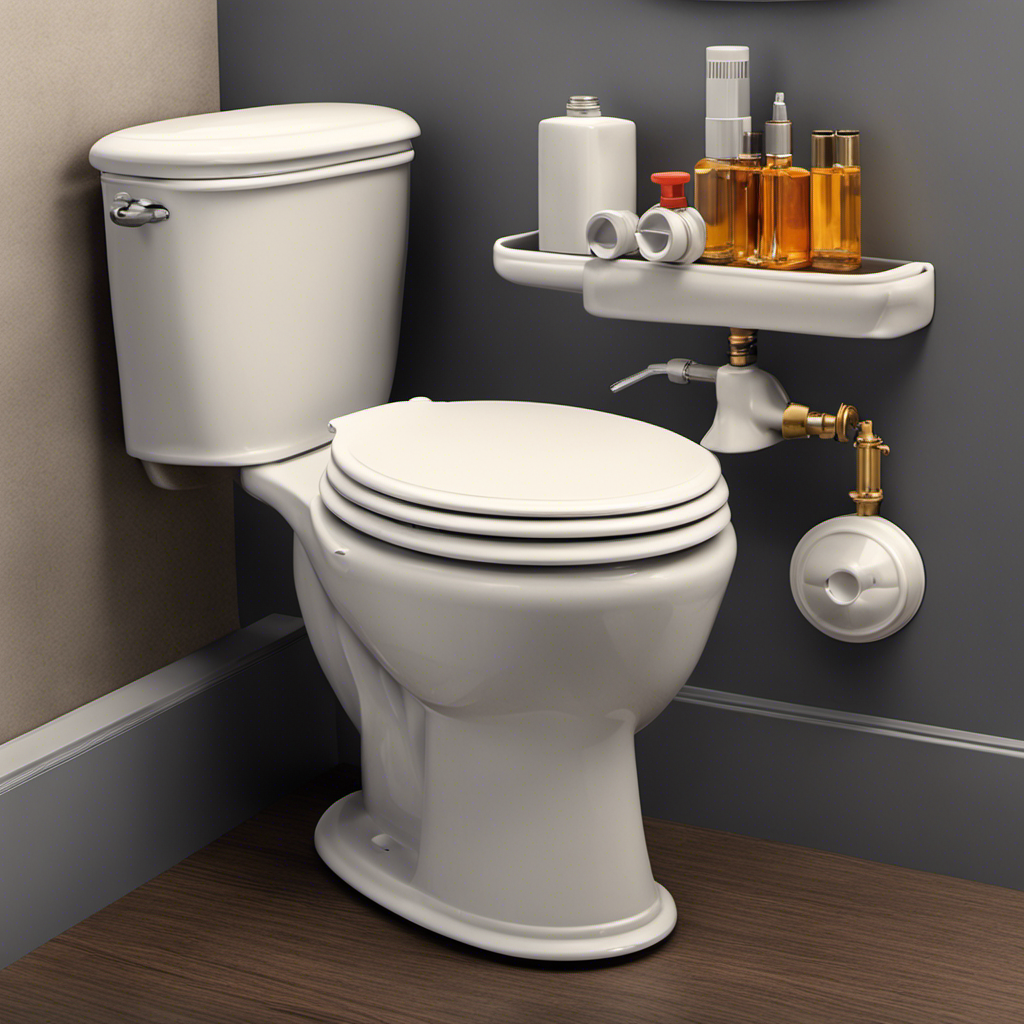Have you ever wondered why we can’t simply flush our unused medication down the toilet? The answer lies in the potential environmental impact, water contamination, drug resistance, and public health concerns that arise from improper disposal.
In this article, we will explore the reasons behind this prohibition and discuss safe disposal methods that can help mitigate these risks. Join us as we delve into the world of medicine disposal and learn how to make informed choices for a healthier planet.
Key Takeaways
- Flushing medicine down the toilet can lead to serious ecological consequences.
- Wastewater treatment facilities are not designed to effectively remove pharmaceutical residues.
- Pharmaceutical residues can end up in rivers, lakes, and oceans, posing a threat to aquatic life.
- Improper disposal of antibiotics can promote the development of drug resistance.
Environmental Impact
The environmental impact of flushing medicine down the toilet is significant and shouldn’t be ignored. Improper disposal of pharmaceuticals can lead to serious ecological consequences.
When medicines are flushed down the toilet, they enter wastewater treatment facilities that aren’t designed to remove these substances effectively. As a result, pharmaceutical residues can end up in our rivers, lakes, and oceans, posing a threat to aquatic life and potentially contaminating our drinking water sources.

This waste management issue is particularly concerning because many pharmaceuticals contain active ingredients that can persist in the environment and have detrimental effects on ecosystems. The accumulation of these substances can disrupt the balance of aquatic ecosystems, harm aquatic organisms, and even contribute to the development of antibiotic-resistant bacteria.
Therefore, it’s crucial to raise awareness about proper disposal methods for unused medications to minimize their environmental impact.
Water Contamination
Flushing medicine down the toilet contaminates our water sources and threatens aquatic ecosystems. When pharmaceutical waste enters our wastewater treatment systems, it can be challenging to remove completely. Many treatment plants aren’t designed to eliminate these compounds fully, resulting in their release into rivers, lakes, and oceans.
Pharmaceutical waste contains active ingredients that can have detrimental effects on aquatic life. For example, certain medications can disrupt the endocrine systems of fish, leading to reproductive abnormalities and population decline. Additionally, the presence of pharmaceuticals in water sources can contribute to the development of antibiotic-resistant bacteria, further endangering both human and animal health.

To protect our water sources and aquatic ecosystems, it’s crucial to dispose of pharmaceutical waste properly. This can be done through take-back programs, where expired or unused medications are collected and disposed of safely. By adopting responsible disposal practices, we can minimize the risk of water contamination and preserve the health of our aquatic environments.
Drug Resistance
To address the potential consequences of water contamination, we must now delve into the issue of drug resistance and its implications for our aquatic ecosystems.
Drug resistance refers to the ability of bacteria to survive and multiply in the presence of antibiotics that would normally kill them. The misuse of antibiotics, such as taking them without a prescription or not completing the full course, is a major contributor to the development of drug resistance.
When antibiotics are released into the environment through improper disposal, they can promote the survival and growth of resistant bacteria in water bodies. This poses a serious threat to public health, as antibiotic effectiveness is crucial in treating bacterial infections.

It’s essential that we educate the public about the proper use and disposal of antibiotics to prevent further development of drug resistance and protect our aquatic ecosystems.
Public Health Concerns
Addressing public health concerns, we need to recognize the potential risks associated with improper disposal of antibiotics and their impact on our aquatic ecosystems. Improper medication storage and prescription drug abuse prevention are crucial aspects to consider in order to safeguard public health.
Improperly disposed antibiotics can end up in our waterways, leading to water pollution and compromising the delicate balance of aquatic ecosystems. This can result in the development of drug-resistant bacteria and harmful effects on marine life. The consequences of these actions are far-reaching and can have serious implications for human health as well.
Ensuring proper medication storage and promoting prescription drug abuse prevention are essential steps in protecting our environment and public health.

Transitioning into the subsequent section about safe disposal methods, let’s explore how we can tackle this issue effectively.
Safe Disposal Methods
To properly address the public health concerns associated with improper medication disposal, we must educate ourselves on safe disposal methods that avoid flushing medicine down the toilet.
Proper medication disposal is crucial to prevent the harmful effects of pharmaceutical waste on the environment and public health.
One of the most effective ways to dispose of medications is through pharmaceutical waste management programs. These programs provide safe and secure collection sites where individuals can drop off their unused or expired medications.

Additionally, some pharmacies and law enforcement agencies also have take-back programs that allow for safe disposal. It’s important to follow the guidelines provided by these programs to ensure the proper disposal of medications.
Frequently Asked Questions
What Are Some Alternative Methods for Disposing of Medicine That Are Safe for the Environment?
When it comes to disposing of medicine, it’s important to consider alternative methods that are safe for the environment. Proper disposal can include taking medication to a pharmacy or participating in a drug take-back program.
Can Flushing Medicine Down the Toilet Contribute to the Development of Antibiotic-Resistant Bacteria?
Flushing medicine down the toilet can contribute to the development of antibiotic-resistant bacteria and have a negative impact on aquatic ecosystems. It’s important to find safe disposal methods to protect our environment and prevent potential harm.
How Does the Improper Disposal of Medicine Affect Aquatic Ecosystems?
Improper disposal of medicine, such as flushing it down the toilet, can have detrimental effects on aquatic ecosystems. It can lead to water contamination, which in turn can harm aquatic biodiversity and disrupt the delicate balance of these ecosystems.

Are There Any Potential Risks to Human Health From Pharmaceuticals Being Present in Our Water Sources?
There are potential risks to human health from pharmaceuticals being present in our water sources. Water contamination can occur when medicine is flushed down the toilet, leading to adverse effects on our health.
What Are the Potential Long-Term Effects of Improperly Disposing of Medicine on Public Health?
Improperly disposing of medicine can have potential risks on public health. The long-term effects can be severe. It is crucial to understand the importance of proper disposal to avoid contamination and protect our water sources.
Conclusion
In the vast tapestry of our ecosystem, the act of flushing medicine down the toilet reveals itself as a hidden poison, seeping into the veins of our environment.
Like a serpent coiling around the delicate balance of life, it contaminates our precious water sources and breeds drug-resistant organisms.

A call to action arises, urging us to embrace safe disposal methods.
Let’s be the guardians of our public health, and protect the fragile threads that bind us all.










